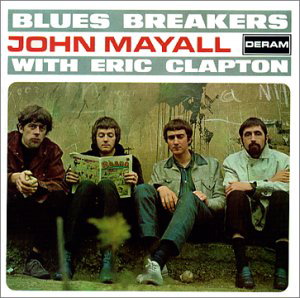 Like most beginning bloggers I was struggling with what might be a good idea for my very first post. I thought about going back and reflecting on icons like Robert Johnson and W.C. Handy. They were incredible human beings who motivated so many people. However, my influences come from people inspired by these delta bluesman. When I thought about this for a moment, I realized I had my first post …
Like most beginning bloggers I was struggling with what might be a good idea for my very first post. I thought about going back and reflecting on icons like Robert Johnson and W.C. Handy. They were incredible human beings who motivated so many people. However, my influences come from people inspired by these delta bluesman. When I thought about this for a moment, I realized I had my first post …
I decided to create a 3 part series that really emphasized my first music impressions, as opposed to giving a history lesson that has been written many times over about this historic time in music. If I explained more about me and where I was during the mid to late sixties perhaps this could set the tone for the rest of the blog posts to follow. So I hope you enjoy reflecting back with me and hopefully you can add some comments of your own.
HERE WE GO
I was brought up in a family where music was a big staple. It was a very unusual household in that everybody seemed to do their own thing. Now don’t get me wrong, there’s nothing wrong with doing your own thing, but I was five years old! It’s this time frame where my recollections and appreciation for music in general began. When I was five, my brother would have been 13 and my sister 15.
There was always music playing. My mom loved Tom Jones and would listen to songs like “Its Not Unusual,” and “What’s New Pussycat.” If my sisters weren’t watching The Monkees television show, they were listening to the Beatles album Rubber Soul and later Revolver.
My father would listen to the big jazz bands. His favorite was Gene Krupa and Benny Goodman. He would reminisce about World War 2 while playing the harp. He would play tunes like When Johnny Comes Marching Home Again. Afterwards, he would reply, “Do you want to hear it backwards?” He would then turn completely around and play the song over again. My dad was a serious character.
ELECTRIC BLUES GOES MAINSTREAM
The best scene was going on in my room. I shared my room with my brother. It was 1966 and late at night while I was trying to sleep, he would practice playing the guitar over and over again. I’m not sure if he ever slept. During this time, there was one tune he was learning, and at the same time, really stood out to me. I can still think back and remember him playing that riff again and again. It was John Mayall and The Blues Breaker’s Hideaway. It would be a tune that would shape my very first audible memories.
I’m sure I drove by brother nuts. So tasty was the music that I took his guitar out of its case and put my signature buck tooth marks in the body of his axe. He would have to rehearse and play his instrument with those marks for several years. Tough break, but I was only five. If it weren’t for him being a guitar player, I’m sure he would have kicked my ass. He didn’t want to hurt his fingers, so I got off lucky.
For those of you who may not be familiar, John Mayall and The Blues Breakers at the time was a pioneering English blues band. It is the album where Eric Clapton emerged as the most innovative and original guitar player in the world. Blues guitarists like B.B. King, Buddy Guy, and Albert King had pioneered the electric blues guitar idiom, but it was Clapton that made it mainstream and transformed it. The blues from that moment on became an integral part of popular music and rock and roll.

Here is a list of songs from the album.
1. All Your Love
2. Hideaway
3. Little Girl
4. Another Man
5. Double Crossin’ Time
6. What’d I Say
7. Key To Love
8. Parchman Farm
9. Have You Heard
10. Ramblin’ On My Mind
11. Steppin’ Out
12. It Ain’t Right
13. Lonely Years
14. Bernard Jenkins
STUDENTS OF MAYALL
Clapton may have been Mayall’s first pupil, but it wouldn’t be his last. John Mayall schooled many new musicians that would follow. Some of his future luminaries included:
• Peter Green and Mick Fleetwood, later known as Fleetwood Mac
• Mick Taylor would later go on to be in The Rolling Stones
• Don “Sugarcane” Harris, Harvey Mandel, Randy Resnick, Coco Montoya and Walter Trout.
• Aynsley Dunbar, Dick Heckstall- Smith and Andy Fraser were in the band Free.
There is no doubt that this is a classic album. The band at this time consisted of Hugie Flint on drums and John McVie (Fleetwood Mac) on the bass. Mayall made his claim to fame with this disc and his respectability has lasted to this day. He is commonly dubbed the “Godfather of British Blues”.
When I think that this album today stands out as timeless and one of the most remarkably influential electric blues album of all time, I can’t help but reflect back and smile.
You can listen to Hideaway below. It is a selection from John Mayall’s 70th birthday party from July 2003, where Eric Clapton joins him back on stage. It’s not the best of Clapton by any means, but he tends to be modest, especially when he is joined by fellow musicians in which he respects. However, it’s a lot of fun to hear that tune playing through my head once again.
Enjoy,
The Blues Blogger
